DELLER'S DARKENER
I haven't tried this since I first started. I ran across my little jar, so I thought I would try it once more.
Here's the coin to begin with. I received it without patina, and believe that it was redirtied along the way. Coin is slightly porous as well.
I cleaned the remaining dirt off with a silver brush and one of the Swiss picks. I then soaked the coin in 92% rubbing alcohol for about 30 minutes, to dry the coin as well as prepare the surface.
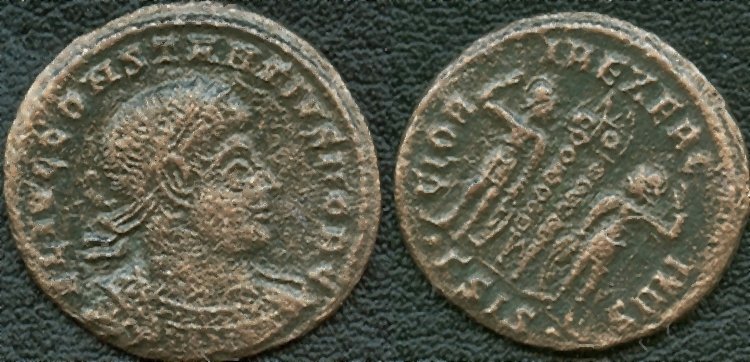
I put a little bit on the corner of a rag, and rubbed it into the coin. This took about two minutes for each side and the rim. Here's what I have now:
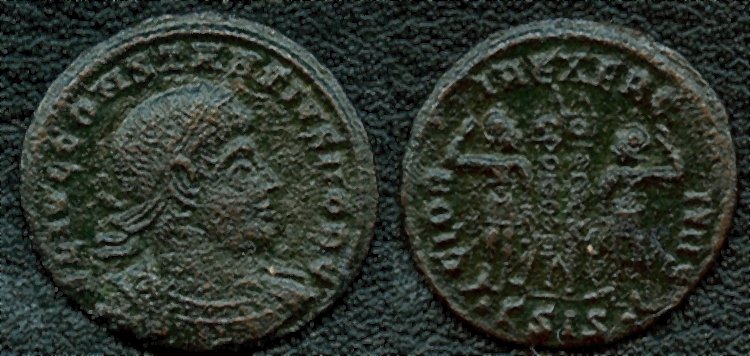
The coin appears smoother in hand, and Deller's seems to work decently when worked into the coin. It is still wet, is why I believe some came off of the high points, such as the reverse right rim. It probably needs to sit for a bit before handling.
If I remember correctly, when I first tried this, I simply rubbed some on with my finger, and let it sit in the window. But it looks like it works fine if it is rubbed into the coin.
I'll have to use this some more, to get a good feel of it.
I applied a little more, wiped off the excess, and am going to let it sit overnight. If I remember, I'll post a scan of it tomorrow before work.
Well, I was happy with the result, until I applied Renwax to it. The simple act of applying Renwax removed much of the darkener, and buffing the Renwax removed much more. The coin sat for about 11 hours, so I would think it would have been set. I don't know where the green color is coming from in the scan, the darkener leaves a dark brown color.
I wish I could remember where I smelled this stuff before. It has a distinctive smell, almost like spoiled eggs, but not really...
I know I've used chemicals that smell just like this before, but I think it was many years ago. I may be able to reproduce it cheaply...
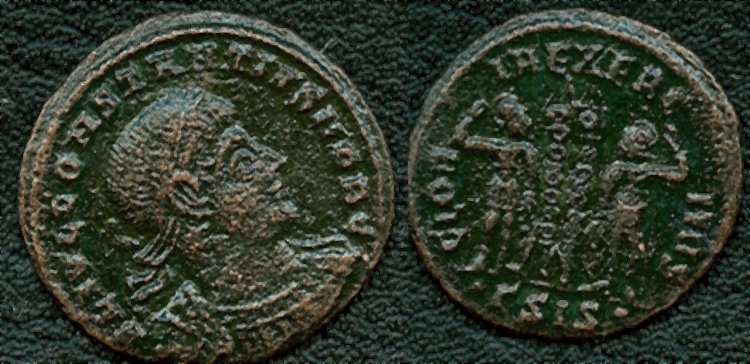
I'm not giving up yet on this. Here's another coin that I received that had been overly cleaned and redirtied. Applying Deller's with a Q-Tip. Coin has been soaked in rubbing alcohol for 10 hours. I'm going to put the coin under my desklamp for an hour or so before touching it again. The desklamp may set the chemical better, with the little heat the bulb creates.

The coin is a bit porous (best seen on cheek) and has some encrustations on the reverse that are resistant to grinding. I was able to remove some with a diamond dipped ball-pin (you can see some scratches there between Constans and Victory, which was the ball going just a bit too deep, but that part came off decently). The rest of the encrustations just refuse to yield, so I decided to leave it. The diamond dipped ball is my weapon of choice on encrustations on coins that I'm not going to zap. If the coin was patina'ed, it most likely wouldn't have scratched through.
The coin has set under the desklamp for about an hour. The bulb was about 1.5" from the coin, and the lamp is domed, so the heat was reflected upon the coin. After a half an hour, I turned the coin to the other side.
12/29
I actually let each side bake for an hour each, two separate half hour sessions on each side. I had to reapply the Deller's to the reverse though. When I placed it under the lamp, obverse up, the reverse smudged on the highlights. So apparently, one shuold only do one side at once.
Coin looks nice right now, after sitting for close to 24 hours. It is shiny, as if it had been waxed, but hasn't.
Now, the true test: Renwaxing.
Bleh, some came off again, while gently putting Renwax on. I was very gentle, and didn't rub it in like I normally would. Also, there's a greenish tint to the coin now as well.
I don't get it. Is the Deller's and Renwax reacting together or what?! About the only other thing I can think of, is to bake the coin in a toaster oven- or not Renwax it. It was a beautiful brown, but after Renwax, it has turned greenish. Highlights have worn off due to Renwaxing. This is starting to really annoy me! The scan came out more green than the coin really is, and the reverse doesn't really look that bad. The only thing that really has changed is that the Deller's covered some of the porousness, otherwise this would have been a complete waste of time.
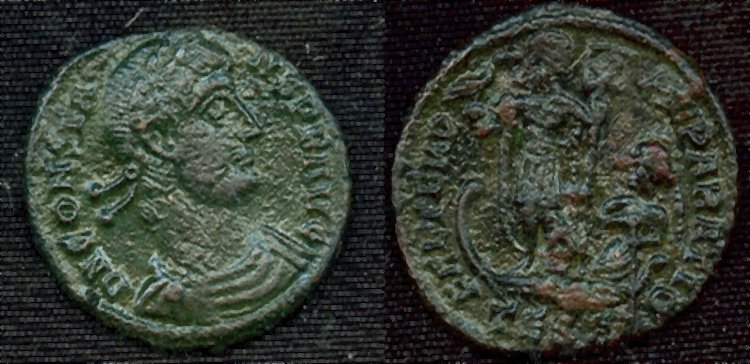
And here's 4 coins from my cull bin, that I normally sell on ebay once I get 100+ coins together. They're good for experimentation, and sometimes people will find something I have missed. I have an idea of what some of these are; but due to the condition, full attribution escapes me. These I am going to sit in my south facing window for a few days. I've read that this works well to let the Deller's set.
Instructions on the use of Deller's are plentiful, but if I can't find a method that allows Renwaxing, it's useless to me. I've had one bad outbreak of Bronze Disease, and that's enough.
These coins aren't really darkening. Perhaps it's because I didn't soak them in rubbing alcohol? Putting them in the window anyways.

After a few days in the window, the coins have darkened somewhat- but the result was not "pleasing". The toaster oven seems to be the best method by far.
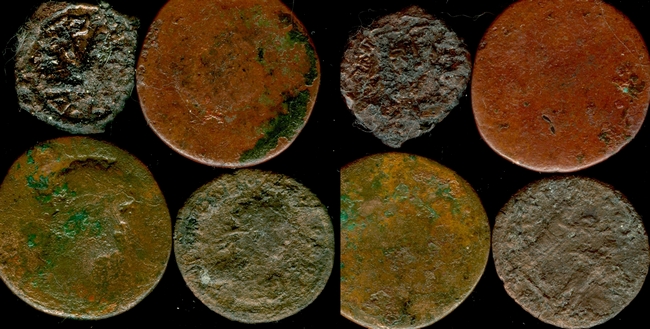
One more coin in the window. This coin had been soaked in rubbing alcohol, and darkened. I believe that applying the Deller's with a rag, and rubbing it in, gives better results than using a Q-Tip. Removing excess with a Q-Tip seems easier though.
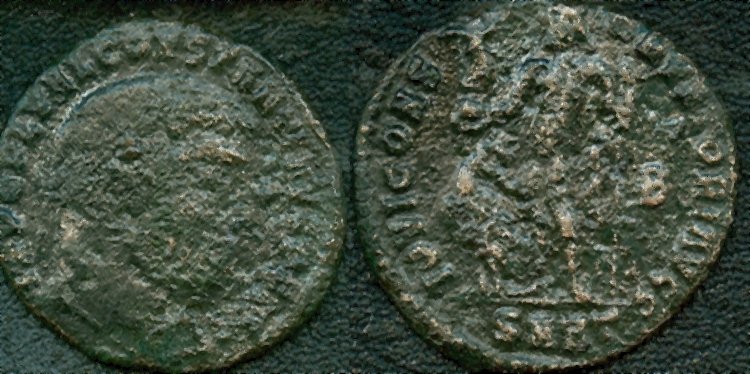
And the end result, 1/02/06
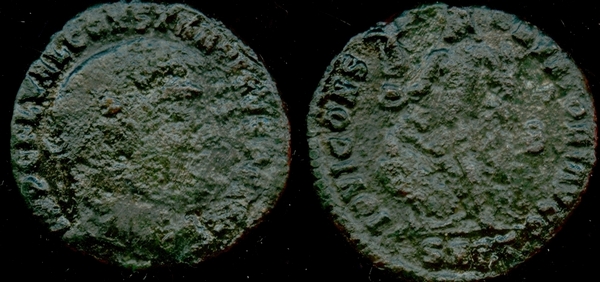
This coin darkened up decently- so rubbing alchohol must be necessary in preparing the coin. Some of the darkener was removed while applying Renwax, and more was removed while removing the Renwax. Heat seems to cure Deller's.
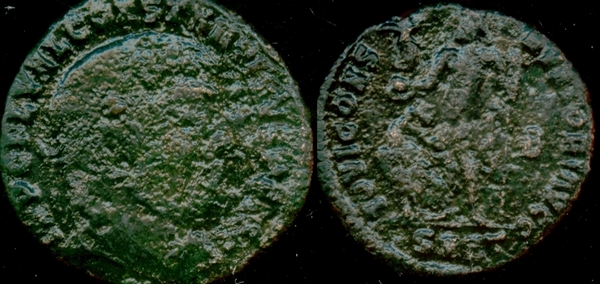
The metal bubbles are really showing up in the scan- it doesn't really look this bad in hand. The scans are also greener than the coin actually is- it more of a dark brown. Not too bad looking in hand, and definitely better than before.
12/29/05 Toaster Oven
I've preheated the toaster oven to 250 degrees. I will add Deller's to each side separately, and bake for 10 minutes each side. Perhaps this will set it. The coin soaked in rubbing alcohol for about 10 minutes.
It seems to be a larger size Constantinople commerative, with Victory on prow left, bust left on obverse. It is nearly worn smooth and has a partial patina.
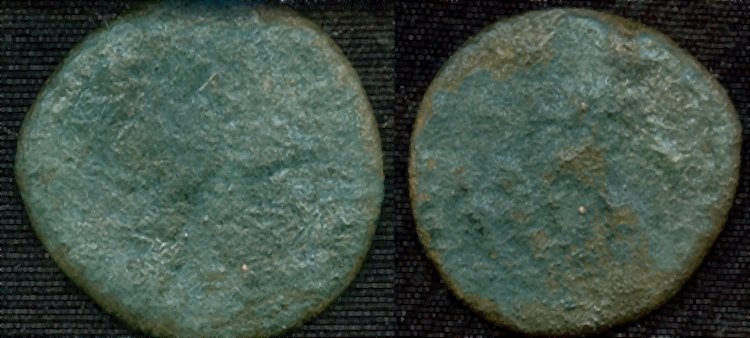
Deller's darkened the coin up some, but not as much as some. It probably is due to the partial patina; and works better on bare metal. After applying to the reverse, it looks like I was off. It seems to be one of those coins with the emperor and two captives left, bust left holding globe.
The Deller's darkened alot more when heated. Even applying it to the obverse, when the coin was warm, produced a darker effect. It isn't as shiny as the Galley FT was though. The coin doesn't appear to be 250 degrees either... it was warm to remove from the toaster oven, but not hot. I've lost my chef's fingers over the last 3 years of not cooking, so I believe the coin didn't heat to 250. I'll let it sit until tomorrow, then try Renwaxing. You can see from the scans that the coin is somewhat darker, but can still see where the patina was and wasn't. The Deller's brought out more details as well, but I doubt I can get anything other than a loose attribution still.
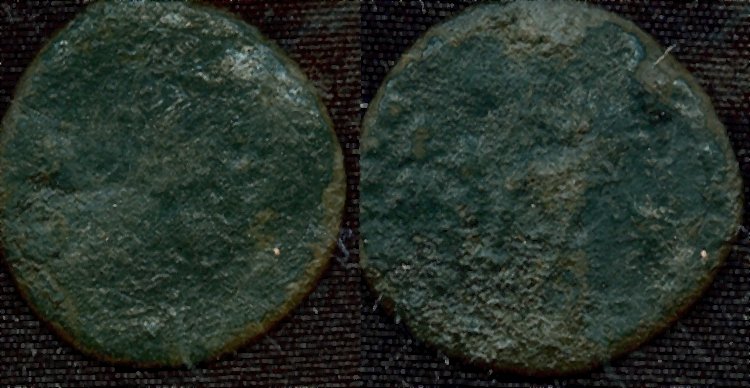
Initially applying Renwax, I didn't notice any of the Deller's coming off. Well, I think that's it. Deller's wasn't removed during Renwax'ing. Now to test it one more time on a better coin, to make sure the results are duplicated.

Second Attempt with Toaster Oven 12/30/05
This is a coin that I was forced to remove the silvering from. It was quite hideous, and pretty much unattributable. Below the silvering was a patchy dark green patina in places, and others; bare metal. I initially used my assortment of blue/peach/red radial brushes, but they weren't having much effect. I stepped it up to yellow and reds, with better results, but found out it wasn't really the silvering that was the problem- it was the encrustation under the silvering that was making the coin a mottled blob. Even this combination wouldn't tear through this encrustation (it removed the silvering very easily though), so I dug out the Biox. Amazingly, after about 15 minutes, the Biox only removed maybe 60% of the encrustation.So I moved onto Nic-a-Lene Coin cleaner. It bubbled on the encrustations a bit, and I waited until it stopped bubbling, which was about 2 minutes per side.. Remember, don't get this stuff on your finger- it's burning a bit while I type this. Guess I should go rinse it off. I repeated adding drops onto the coin,twice on the obverse and thrice on the reverse, until I felt nothing else was going to be removed. I rinsed the coin thorougly, hit it with my red/yellow brush combo, silver brushed it, peach radial brushed it and finally let it soak in alcohol for 15 minutes. Here's what the coin finally ended up as. Sorry, I didn't take a before scan- I didn't expect this much work on it; I just thought it was the silvering that was the problem.
*Note: Biox and Nic-A-Lene coin cleaner should never be used, except for a last resort. I didn't feel like digging my zapper out and setting it up for one coin, so I used these methods. I could barely tell the obverse from the reverse to begin with; this coin was truly hideous. It's attributable now at least...

This coin does not want to darken. I applied a generous coating to it, and let it set for a minute before rubbing, which seemed to help. Bleh, it simply doesn't want to darken for some reason. Perhaps there's still some chemicals in places- the darkening is occurring in patches. I'll stick with it until I get a uniform darkening.
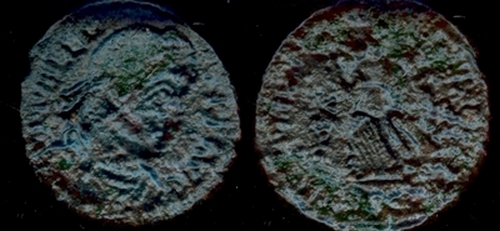
And after 10 minutes baking:
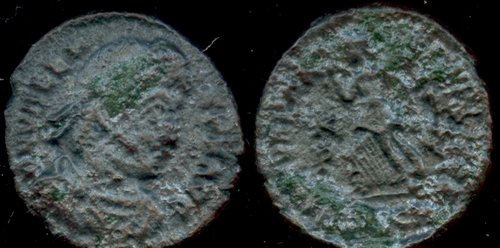
The coin actually lightened a bit during baking. I'll try to Renwax it tomorrow.
The Deller's was removed upon Renwaxing- but I half expected it, due to the trouble I had to get it to darken.

And another attempt: Byzantine Follis
This coin had some kind of weird purple crap obscuring it, only the M was visible. The red and yellow brushes took whatever it was off, and left more or less bare metal.
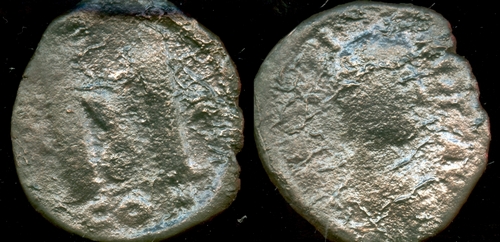
And after baking:

The coin looks more brown than the scan is appearing. I'll try to Renwax this one tomorrow, too.
And the coin after Renwaxing:

It does seem that a bake in a toaster oven will set the darkener.
CONCLUSIONS:
Soak in 92% Rubbing alcohol for 15 minutes before applying Deller's.
Bake in a toaster oven (or equivalent) around 250 degrees F for 15 minutes or so.
Let sit overnight before applying Renwax.